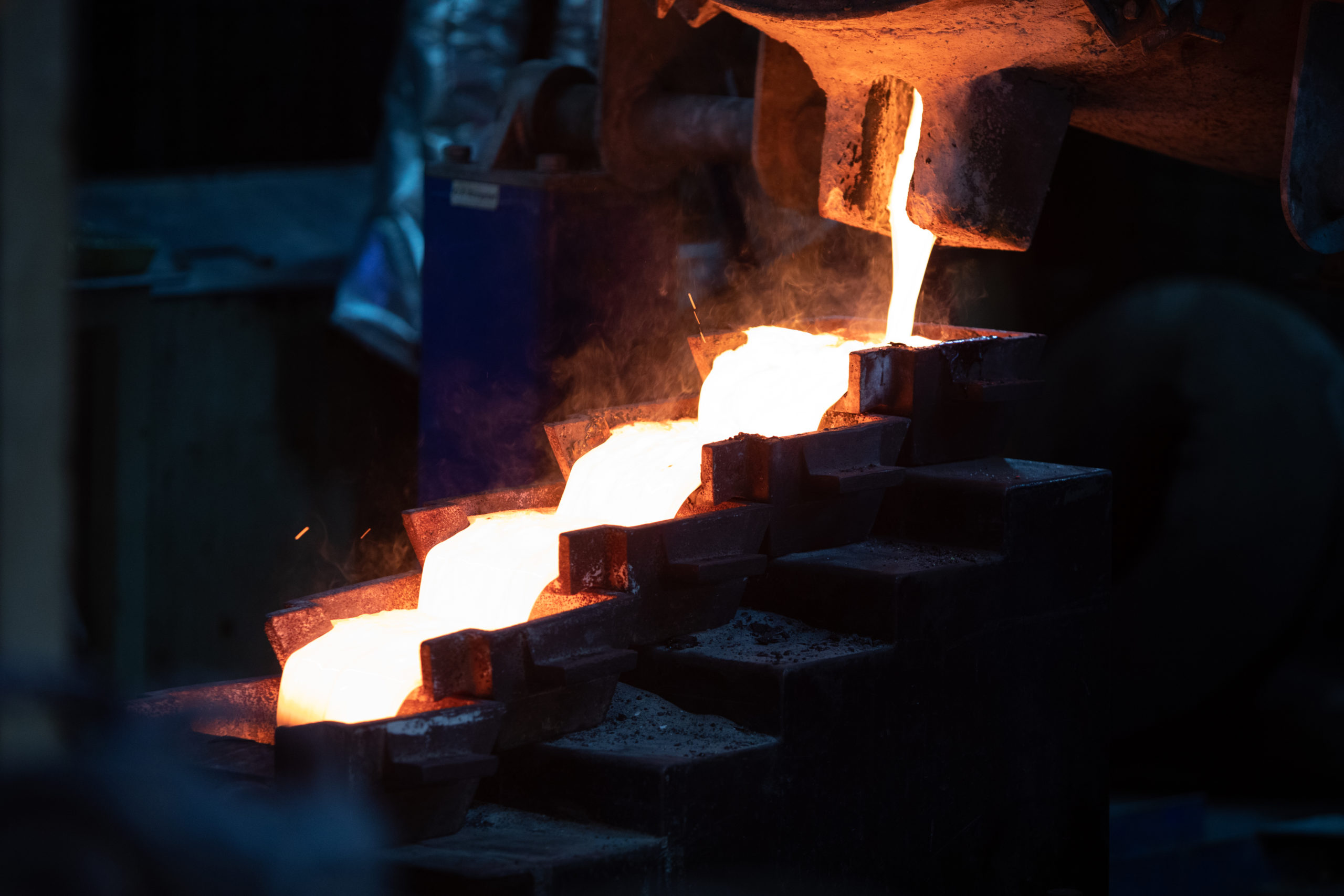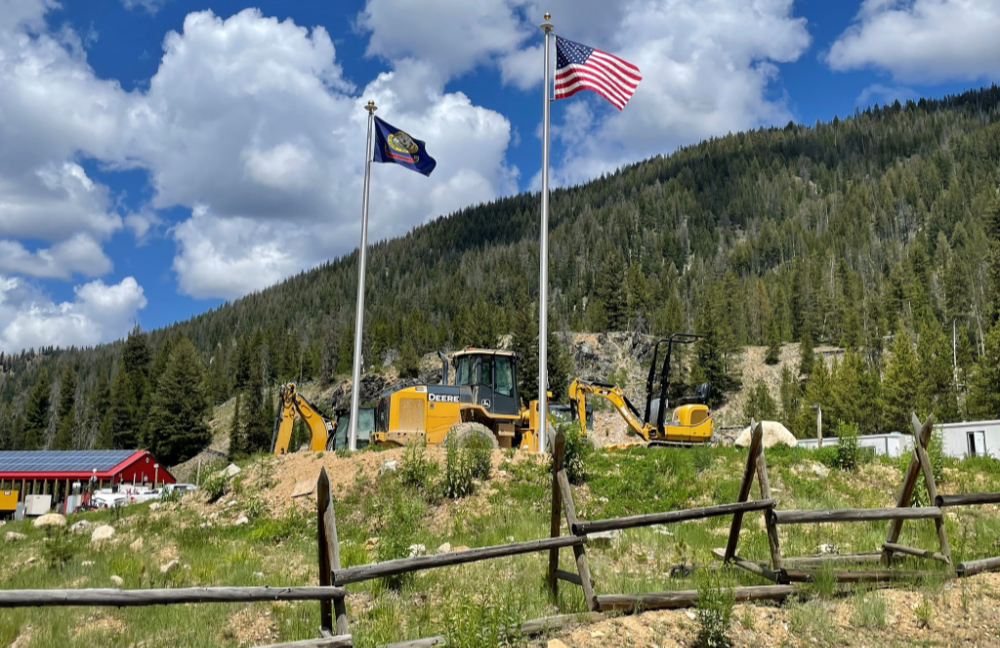Is this the most undervalued uranium player in the world?
By Tommy Humphreys
Talking top value amid low uranium prices, Daniel Major gets to the crux of his pitch for GoviEx, the uranium developer he leads. “If you believe this cycle is going to turn, then you want to be looking at projects that can be built in the cycle and generate cash flow,” says Major. He sees GoviEx as one of the best answers — if not the best answer — to that investor pursuit.
Consider: Its valuation versus a swath of peers — the uranium developers — currently trades around $0.15/lb uranium resources, of which it has an industry leading ~200 million pounds. Yet the peers trade at over $0.55/lb. Strip away the lesser developers on the list — considering GoviEx owns two fully permitted uranium projects — and the average valuation rises to $1/lb uranium. It’s a yawning gap in valuation that puts GoviEx at or near the top of the list for investors on the hunt for value in the beat-up uranium sector.
Consider also the main project, team and place. Not exactly lightweight. Niger, if extremely poor and with security issues, is one of the world’s premiere uranium districts. That much is clear in GoviEx’s neighbour at the Madaouela project, Areva. The leading uranium producer operates just 10 kilometers west of Madaouela, GoviEx’s flagship project. The deposit holds about 100 million pounds uranium outlined by an impressive 600,000 meters of drilling in a deposit that has not been closed off. Areva exploits similar deposits and, by some accounts, ones that are dwindling after 50 years of production.
It all begs the question — is Niger such a bad place to be? On the one hand, you have to weigh the safety risk of operating in Niger. The danger of Boko Haram and Islamic extremism is real. On the other hand, major uranium producers have long operated in Niger under regulation of a government that prioritizes uranium development. Major believes the risk is overstated and that operating on the ground in Niger has its advantages. For one, given its long history of uranium production, there are established companies run by Niger residents that know how to safely work in country.
As for the team and backers, GoviEx swings hard. Some of the people and shareholders: Govind Friedland, a geologist and the son of mining legend Robert Friedland, founded the company. Major, a mining engineer who formerly ran Russian titan Oleg Deripaska’s molybdenum mining and timber operations, drives it. Cameco, the major uranium producer, is an early investor. Toshiba is also aboard in recent years, even after the Fukushima disaster. Notably, Toshiba owns Westinghouse, a global leader in nuclear reactor construction. It is a long-term partner that has invested at much higher prices, with an eye to offtake. Worth pointing out here, GoviEx owes Toshiba just shy of 500,000 pounds of uranium in April 2020. It’s a debt GoviEx is on the hook to meet. But the debt is also an indication of a strong partner’s intent and view of the company. It wants and sees the potential to get U3O8 out of the ground at Madaouela. GoviEx is expecting to repay the loan from its planned 2.5 million pounds of annual production.
More recently, Ivanhoe Industries — a private Robert Friedland company — financed GoviEx. Then Denison, the uranium concern of billionaire resource developer Lukas Lundin, became akey shareholder in a deal that brought its portfolio of uranium projects in Mali, Zambia and Namibia into the GoviEx fold. That bolted on about 100 million additional pounds of U3O8 in three different projects and diversified the holdings of GoviEx.
It all begs the question — is Niger such a bad place to be?
“I think people had their discomfort,” Major notes, speaking to the Niger-only face of GoviEx before the Denison deal. But the Denison assets brought aboard a solid team of veterans in the uranium space to advise GoviEx and diversified the portfolio, Major says. “It brings in countries and regions people are more accepting of.” Of the Denison assets, Mutanga — the Zambian project — is the most advanced. Like Madaouela, Mutanga is permitted for construction.
One thing to watch: At present GXU stock is not very liquid, averaging about 35 thousand shares traded per day over the last 3 months. It trades on the CSE, and the lack of interest in it, as much a function of the depressed uranium market as anything else, remains an issue. GoviEx is planning an up-list to the TSX Venture to boost visibility and to undertake marketing initiatives, including retaining Renmark, the investor relations firm. The return of the uranium bull would also help.
Taken altogether, Major sees the market as getting the company valuation wrong — ignoring its strengths. In this he is critical of GoviEx’s communication to the broader market of investors. “We’ve done all the hard work,” Major says. “We just forget to tell people we were doing it.”
But the goal is clear. Major and the GoviEx team see Madaouela producing in 2020. It requires a US$359-million mine build and would deliver an operation with a two-decade long mine life producing about 2.5 million pounds U3O8 a year, according to a recent prefeasibility study. The flat-lying deposit is far from drilled off and notably open to the west in the direction of Areva operations. Basic costs come in at just over US$24/lb U3O8, GoviEx says, and Major pegs breakeven around $48/lb U3O8.
To be sure, the basic operating cost is close to today’s spot price of uranium. But Major considers the project financeable via debt, something it will work on through the coming year. He notes that contract prices are in the mid-$40/lb and, perhaps more importantly, that some (but not all) term prices after 2020 are over $50/lb. “There are floor term contracts available at $50 to $55/lb,” he says. “So at that price, if we can secure those kinds of contracts for this project, (it) can be built for 2020.”
It’s a significant horizon. As Major rightly points out, many analysts view the market turning bullish as the current oversupply works itself out, leading to higher uranium prices. With that in mind, one of Major’s most convincing arguments in favor of Madaouela and GoviEx is that the project is uniquely poised — as it’s already permitted — to get built and make cash flow should the market pick up within the next half decade. That timeline contrasts with other projects around the world that typically require much longer permitting timelines. In Canada’s Athabasca Basin, a leading uranium jurisdiction, permitting takes longer — 7 or more years is the norm. Stuck in permitting limbo, such projects may miss the cash-flow boat when and if the tide turns.
Taken altogether, GoviEx’s chance of success given its valuation is enticing. GoviEx director Christopher Wallace puts this view well. Speaking to CEO.CA, he scratches his head at GoviEx’s current market cap: roughly $26 million (less when he spoke) for a company, operating largely in Niger, with 200 million pounds uranium, two projects with mine permits and competitive operating costs in view.
“The real question is — should we trade at the same level as the peer group?” he asks. Given the A-list shareholder group, the size of the resource, and two mining permits, it is a good question.
By CEO.CA
Recent Price: .10
Shares outstanding: 264.7 million
Market cap: $26.5 million
Treasury: Roughly $3 million
Important disclaimer: Goviex Uranium is a CEO.CA sponsor and author is long GXU at the time of writing, which makes him biased. Additionally, GoviEx Uranium is a high-risk penny stock that is not suitable for most investors. The above article is for informational purposes only and is neither a solicitation for the purchase of securities nor an offer of securities. Readers of the article are expressly cautioned to seek the advice of a registered investment advisor and other professional advisors, as applicable, regarding the appropriateness of investing in any securities or any investment strategies, including those discussed above. All facts are to be verified by the reader. Either the author, CEO.CA or its consultants may from time to time hold or transact in the securities mentioned.
The above article and video may contain forward-looking information within the meaning of applicable securities laws. All information and statements other than statements of current or historical facts contained in this press release are forward-looking information. Forward-looking statements are subject to various risks and uncertainties concerning the specific factors disclosed here and elsewhere in GoviEx’s periodic filings with Canadian securities regulators. When used in this news release, words such as “will”, “could”, “plan”, “estimate”, “expect”, “intend”, “may”, “potential”, “should,” and similar expressions, are forward-looking statements. Information provided in this document is necessarily summarized and may not contain all available material information. Forward-looking statements include, without limitation, statements regarding expected benefits of the Transaction, those with respect to the use of the proceeds raised under Placement and other statements that are not facts. Forward-looking statements are based on a number of assumptions and estimates that, while considered reasonable by management based on the business and markets in which GoviEx operate, are inherently subject to significant operational, economic and competitive uncertainties and contingencies. Assumptions upon which forward looking statements relating to the transaction have been made include that the uranium market may be reaching a turning point and that the long-term fundamentals of the uranium market remain incredibly strong In addition, the factors described or referred to in the section entitled “Financial Risks and Management Objectives” in the MD&A of GoviEx and “Risk Factors” in Denison’s Annual Information Form dated March 24, 2016, which are available on the SEDAR website at www.sedar.com, should be reviewed in conjunction with the information found in this news release. Although GoviEx has attempted to identify important factors that could cause actual results, performance or achievements to differ materially from those contained in the forward-looking statements, there can be other factors that cause results, performance or achievements not to be as anticipated, estimated or intended. There can be no assurance that such information will prove to be accurate or that management’s expectations or estimates of future developments, circumstances or results will materialize. As a result of these risks and uncertainties, the Transaction could be modified, restricted or not completed, and the results or events predicted in these forward looking statements may differ materially from actual results or events. Accordingly, readers should not place undue reliance on forward-looking statements. The forward-looking statements in this news release are made as of the date of this news release, and GoviEx disclaims any intention or obligation to update or revise such information, except as required by applicable law, and GoviEx does not assume any liability for disclosure relating to the other company herein. Cautionary Note to United States Investors Concerning Estimates of Measured, Indicated and Inferred Mineral Resources: This press release may use the terms “measured”, “indicated” and “inferred” mineral resources. United States investors are advised that while such terms are recognized and required by Canadian regulations, the United States Securities and Exchange Commission does not recognize them. “Inferred mineral resources” have a great amount of uncertainty as to their existence, and as to their economic and legal feasibility. It cannot be assumed that all or any part of an inferred mineral resource will ever be upgraded to a higher category. Under Canadian rules, estimates of inferred mineral resources may not form the basis of feasibility or other economic studies. United States investors are cautioned not to assume that all or any part of measured or indicated mineral resources will ever be converted into mineral reserves. United States investors are also cautioned not to assume that all or any part of an inferred mineral resource exists, or is economically or legally mineable.
More News
{{ commodity.name }}
{{ post.title }}
{{ post.date }}




Comments